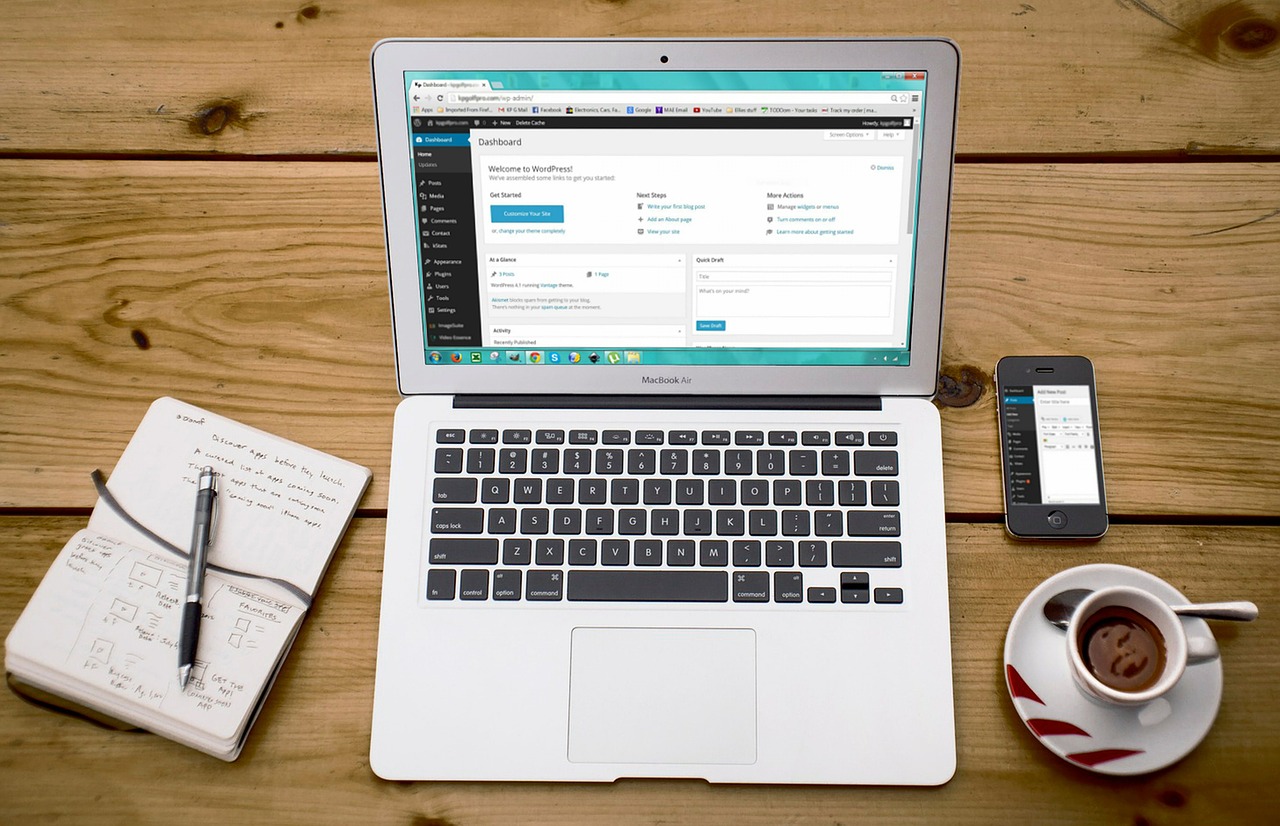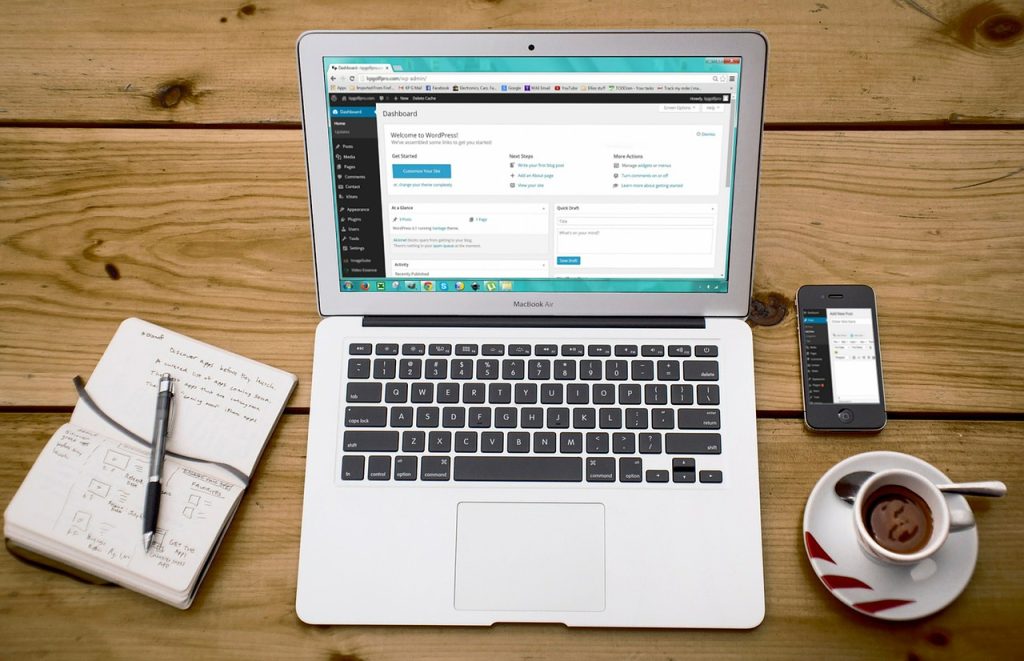
RSS feed is simply a generated file from a website / blog with posts / news. It is used to easily offer readers of a website a notice of when there is a new post from your website.
The RSS feed is thus your latest updates that are read by a program called RSS reader. The benefit of this is that you may want to follow 10 different pages / blogs and you want a notice when a new post arrives – you will get a message on your computer.
This is what your readers need to receive your RSS Feeds.
Your reader needs to know the address of your feed, what the address is can vary depending on which cms (update tool) you use, I will show where your feed is when you use WordPress.
The RSS feed for this page is https://Wordpress.co/feed you just add / feed for a WordPress page. Make it easy for your readers and create a link to your feed.
RSS Reader
When you know this address, you can download an RSS Reader, which one you should use, you decide, right now I use one called RSS Notifier for more examples see this page. With an RSS reader, you just enter the address of the blogs / pages you want to follow.
Surely it’s fun to browse the web? But as you have noticed, time can only run away. It often takes a long time just to visit their favorite sites / blogs. Wouldn’t it be great if you could gather all the headlines from your favorite sites / blogs in one place?
You can. This is called RSS feeds.
The technical acronym for RSS is “Really Simple Syndication”. RSS is a collection of XML-based file formats that are used to syndicate web content and are used by news sites and blogs, among others. For nerds and IT technicians, this means something, but for ordinary people like you and me, you can easily get the feeling that you do not understand.
To make RSS easier to understand, we say that RSS stands for: It is “Fun to Avoid Surfing”. RSS is thus a way to quickly gather the very latest headlines from all your favorite pages / blogs in one place. So you do not have to surf!
Suppose you have 50 pages and blogs that you visit regularly. Visiting every page and blog every day can take several hours. With the help of RSS, you can subscribe to a website or blog and get all the new headlines from all the 50 pages and blogs in a single list. That way you can see what happens in just a few minutes instead of hours. What a time saver!
The place where your headlines gather is called an RSS reader. This is where the headlines from all the pages and blogs that you subscribe to are collected. Subscribing to headlines is completely free.
Subscribing to an RSS feed in practice means that you tell a website or blog that they will send you the latest headlines. It’s like subscribing to a newspaper or newsletter. But instead of getting a newspaper or a newsletter, you get a list of the latest headlines sent to your RSS reader. If you think a headline seems interesting, just click on the headline and you can read the whole text.
To subscribe to a website or a blog’s RSS feed, simply click on the RSS icon (see some examples below) or on a link with the text ‘RSS feed’ or ‘RSS feed’. Normally you will find these symbols somewhere on the page / blog that you are interested in.
RSS symbols
Those who create pages and blogs often want their visitors to subscribe to their RSS feeds, so they usually make it very easy to find their RSS feeds.
Once you have found an RSS symbol and clicked on the link, you will find the RSS feed itself. The RSS feed is not made for you to read, but only for an RSS reader to interpret the content. Therefore, the RSS feed usually does not have a nice layout. But, that’s just how it should be.
The only thing you need to do, to subscribe to an RSS feed, is to copy the link to the RSS feed and paste it into your RSS reader.
But before you can start subscribing, you need an RSS reader. There are many different RSS readers, but they all work in much the same way. What sets the different RSS readers apart is this:
- Some are only for Windows and others are only for Mac (or other operating systems)
Some are completely web-based and others require a program to use
Some cost money and others are free
If you use a standard WordPress theme, you have guaranteed support for RSS and often also visible links to help your users find the RSS files. But what is RSS? and what is it good for?
WP_RSS
What does the shortening mean?
The dashed line below the abbreviation is a signal that you can get an explanation by holding the mouse over. wp_RSS2
How to code this you can see if selecting view source
<abbr title = “Really Simple Syndication”> RSS </abbr>
RSS is an xml format for exchanging information between web services or apps
The RSS files are not intended to be viewed directly, but rather used / reused by various services or programs. Some browsers still have a built-in way to display them to make them easier to read, but it’s basically a transport format, not a display format.
Common uses are:
- Subscribe to news from a website by subscribing to their RSS feed
- Get short info about records from one web page to another
- Show the latest blog posts on another page
- An RSS feed containing links to mp3 files becomes a podcast (in the right reader)
- Aggregate info on a topic by combining multiple RSS feeds and compiling in new ways
- General export format between services e.g. Facebook statuses are generated by an RSS feed from WordPress
- A feed is not meant to be seen straight off, but reused. Different browsers display feeds in different ways
WordPress generates a number of different RSS feeds:
- A feed for all posts [example http://wordpress.com/feed/]
- A feed for all comments [example http://wordpress.com/comments/feed/]
- A feed for each category or tag [example http://wordpress.com/tag/tagname/feed/]
The examples above are based on using “pretty urls”.
How to find and highlight your own or others’ feeds in some way? A simple test can be to have a widget on the home page that shows e.g.
Your latest posts?
Your latest comments?
Your recent posts tagged with something specific?
Or someone else’s feed directly on your page?
There is a “built-in” widget under Appearance> Widget> RSS for this, but you can also download another if it does not suit your purposes.
wp_RSS3
Drag it to the “Widget Area” in your sidebar
wp_RSS4
Fill in as you wish (own or others’ addresses) and it will be as follows:
wp_RSS5
Podcast?
Feel free to make a different example e.g. a podcast. It is usually enough to link to an mp3 file in the post itself for it to work. A good podcatcher reads your regular feed and filters out the entries that contain links to audio files.
If you want to make it easier for the subscription service or users who only download instead of subscribing, you can e.g. tag just those posts with podcasts and highlight especially e.g. like this:
WP_rss8
wp_rss9
To check that your podcast or other feeds are working, subscribe yourself via any service or app.
RSS or Real Simple Syndication as it stands, has been around since 1997, when it was launched by Netscape. In the beginning, it was used mostly by technology enthusiasts in the IT industry and it is only now that it is starting to be used by the masses.
RSS is an XML-based format that delivers content in something called feeds. A feed consists of the latest headlines and short puffs from various websites. It can be anything from small blogs to large content sites. These feeds are usually organized and read by so-called RSS feed readers. Examples of RSS readers that you can download are FeedDemon or Newsgator. Apple has an RSS reader integrated into its latest operating system and it is rumored that Microsoft will also build an RSS reader into its new operating system Vista. Another way to read RSS feeds is to use active bookmarks directly in your browser (Firefox). Internet Explorer will also support RSS in its next version.
By subscribing to several RSS feeds and organizing them in a pretty small index, you can easily get an overview of what’s new on several different websites. If you want to read more after seeing an interesting headline and puff, you click on to the website where the entire article is located.
Subscribe
RSS is thus a way for people to get an overview of a large amount of information in a very short time by subscribing to the information that you are interested in. The amount of content available on the Internet is immense, so it’s no wonder that RSS is being used more and more.
When talking about RSS, most people think of articles and news in the form of text articles. There is really nothing stopping you from subscribing to music or even video that you are interested in. The technology makes no difference to the type of content. In fact, there are several so-called podcasts, ie audio or music recordings (usually in mp3 format) that are delivered via RSS.
Examples of different types of RSS feeds
- Blog feeds – make it easy to get an overview of new blog posts
- Article / news feeds – subscribe to articles on topics you are interested in from your favorite magazines
- Forum feeds – many forums allow participants to get new posts delivered.
- Schedule feeds – schools, clubs and organizations sometimes use RSS feeds to send out information about meeting times,
- events, schedule changes, etc.
- Offer / discount feeds – e-commerce companies have started paying attention to RSS to get information about offers and discounted prices.
- Industry-specific feeds – different industries can use RSS for, among other things, marketing, launch and other communication with their target group
- Ego feeds – Companies or individuals can get feeds based on a specific keyword or phrase to monitor what is being written about them.
- Audio feeds – Becoming more common, you can subscribe to lectures, interviews, music and more. An example is Apple’s
- iTunes program where you can subscribe to so-called podcasts.
- Video feeds – not so common yet, but may be big in the near future
- Think about how your business can use RSS feeds as a complement to communicating with your target audience.

